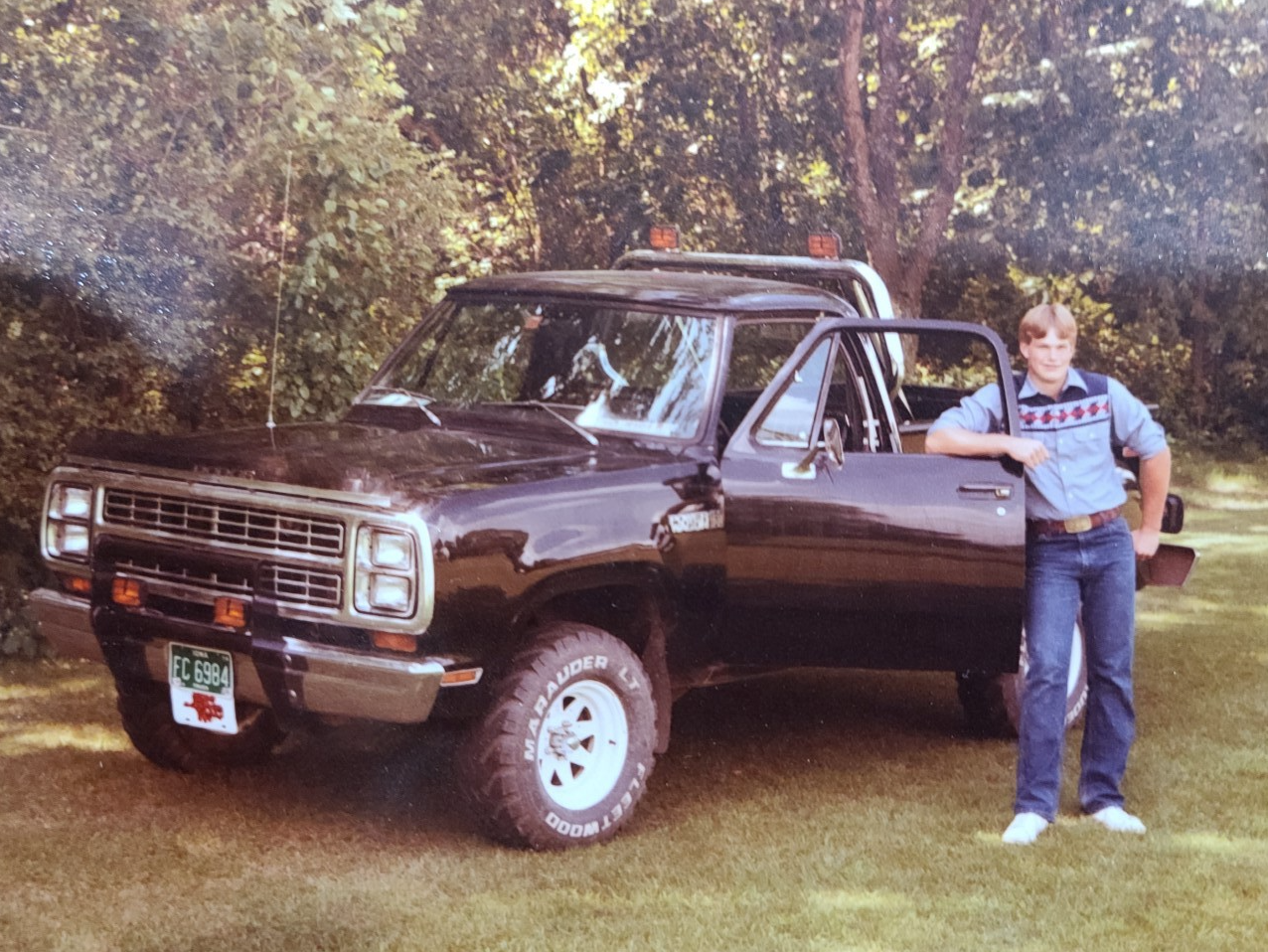
Photo submitted by Dave Struthers.
The Truck Series: Letters to the Editor of the Iowa Soybean Review
November 11, 2020
Editor’s Note
Every truck has a story …
I recently asked readers of the Iowa Soybean Review to share farm pickup stories with me. The response has been incredible.
Thank you to all who have shared your memories with me. Because they are too good not to share, follow along this month as we post truck stories from across the state.
Got a good story? I’d love to hear it. Email me at aclinton@iasoybeans.com.
Ann Clinton
Editor, Iowa Soybean Review
Letters to the Editor
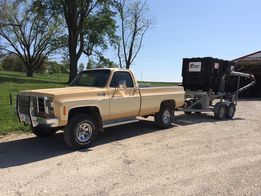
Dear Ann,
I still have my grandparents 1977 Chevy truck they bought new. It only has 60,000 miles on it. Some of my earliest memories are riding in it with Grandpa Maas doing cattle chores. It is still in good condition, and I use it a little at the farm in Massena, where I grew up. I try to be careful with it because it can’t be replaced.
Brent Maas
Sergeant Bluff, Iowa
Dear Ann,
I normally do not respond to any published articles; however, when I sat down last night and had time to read the last page of the Iowa Soybean Review, I couldn’t help but respond. My sophomore year in high school (1988) allowed me to drive a 1977 F-150. It had an in-line, six-cylinder and was four-wheel drive. It never set any speed records, but there wasn’t a dirt road, muddy field or back pasture it couldn’t go through. It ran trap lines and hauled many dead critters. It didn’t look very nice (it was orange) and wasn’t the coolest thing in the parking lot, but it was all I needed. I’m very grateful my folks bought it for me and feel it was a life lesson in many ways.
Always enjoy reading your articles. They hit home with many folks, both old and young. Thanks for putting a “real” spin on things!
Bryce Dee
Marshalltown, Iowa
Dear Ann,
I was cut loose from the military in 1969, and I bought my Dad’s pickup. It was a Ford; I can’t remember the year. I am currently on my seventh truck, and they all have been Fords except one (I won’t talk about that one!).
I stay with Fords, and my current Ford is a 2000 150XLT. I bought it in 2005 with 81,000-plus miles, and this year, it hit 300,000 miles. I am addicted to manual transmission and love going through the gears. As you know, they don’t make stick shifts anymore. I did the next best thing and put a rebuilt engine in my truck. I’ve been told that if I find a stick shift, there’s a good chance it won’t be in very good shape. Just to give Ford a boost, all my Ford trucks have never given me any trouble, except one, which needed a new rear end.
The engine on my current truck was never touched until it reached 300,000 miles. Two cylinders don’t have much pressure. To go through seven trucks means I am not a teenager anymore. This year, I turned 73 years old.
I hope to have a few good years with this rebuilt truck engine. I agree with your boss, and if I were him, I would have asked you to add letters a couple of years ago. Keep up the good work!
Claude Haag
Swea City, Iowa
Dear Ann,
I was on my way to pick another baby Holstein bull calf with my Chevy pickup. It was only zero degrees outside, so I didn’t have a trailer behind. I got to the dairy, found the calf and decided to hogtie it and put it on the passenger floor mat. This was when everything went south.
I had left the pickup running because it was cold, and it’s a diesel. From the time I put the calf on the passenger side and walked around to the driver’s side, the calf managed to escape the hogtie! In doing so, he hit his chin on the electric door locks. I thought – no problem, I have two kids in high school who recently locked their keys in the car, and dad came to the rescue.
Instead, I decided to get some Number 9 wire. I went to the house and the farmer’s wife Gen was home and said there was some wire in the shop. I got the wire and headed back to the pickup. When I returned, the calf had managed to back up, dangerously close to the shift lever, so I quickly found blocks for the wheels. Now, all I had to do was unlock the truck. It may have just taken a minute and a half because of practice, but meanwhile, the calf pooped dead center on my driver’s seat. It was a very unpleasant ride home with the windows up and the heat on.
Dan Dietz
Dear Ann,
I got my first truck when I was 14, from the pasture – where it had sat for six years. It was the first pickup owned by both my paternal grandfather and father. It was a 1960 F-100 Ford “custom cab” with a “three on the tree.” It also had unique, curved glass in the rear window. I was in the process of rebuilding its 292 V-8 when I found a running ’59 for sale 30 miles north of me. I put that engine in, repainted it the original two-tone red and white, and added chrome wheels. With its posi traction rear end and six concrete slats (from a hog confinement) in the bed for traction, it could bust snowdrifts like no other.
 The first week that I didn’t have to repair a seal, gasket, light, brake line or something else, I totaled it when hitting a neighbor’s Cutlass Supreme at an uncontrolled intersection with tall corn on four sides. I was thrown out of the driver’s window and came to while I was in the ditch. The truck was upside down with about four inches between the seat back and steering wheel. I needed stitches in my forehead and leg. My neighbor had some stitches, as well. He later told me he had glass coming from his scalp for months afterward.
The first week that I didn’t have to repair a seal, gasket, light, brake line or something else, I totaled it when hitting a neighbor’s Cutlass Supreme at an uncontrolled intersection with tall corn on four sides. I was thrown out of the driver’s window and came to while I was in the ditch. The truck was upside down with about four inches between the seat back and steering wheel. I needed stitches in my forehead and leg. My neighbor had some stitches, as well. He later told me he had glass coming from his scalp for months afterward.
The box was virtually unscathed, so we made it into a trailer. The remainder was used for “erosion control” in my grandfather’s pasture.
Truck No. 2 was a ’79 W 150 Dodge. It was 5 years old when I bought it and had headers, white spoke wagon wheels, chrome roll bar, KC lights, and front push bar. It had the “warlock” package, which included a Stewart Warner tachometer in the dash, AM/FM/CB radio and bucket seats with a flat bottom seat in the middle, so three people fit well. I had a high lift camshaft installed to give it a good lope. With some liquid courage, it could rev to 8,000 with an otherwise stock engine.
About three years after acquisition, it was totaled as well. Distracted driving, a sharp curve, three passengers and washboards on a gravel road made it go up on its nose, slide on its top and end up on the passenger side. We crawled out the driver’s side. I got four stitches on my arm, my buddy got some in his head, and the girls in the middle just got some bumps. When the deputy arrived, we pushed it onto its wheels, waited for the oil to go back into the pan, fired it up, put it in 4 low, and drove it from the ditch and into a field drive. The deputy took my friend and me into town, where I drove my buddy’s pickup to the hospital to get stitched up.
Trucks No. 3, 4, 5 and 6 eventually wore out. No. 7 had the same fate as No. 1 and No. 2 at the SAME intersection that No. 1 ended its run. Ironically, the vehicle it hit was owned by the same person as the Cutlass Supreme in accident No. 1.
I could tell more stories about all the other trucks. I have some really good ones about No. 8 going through deep water in the floods of 1993. It also caught fire at 1 a.m. while pulling I was pulling a trailer. My wife and three kids, who were asleep in their car seats, were with me.
Dave Struthers
Collins, Iowa
Dear Ann,
This is my dad’s very first pickup. It’s a 1947 Dodge. When he was done driving it, the pickup rested behind the barn until several years ago when my brother restored it to better than new. This is a picture of the pickup outside the church at dad’s funeral.
Debbie Hultman Gordon
Hudson, Iowa
Dear Ann,
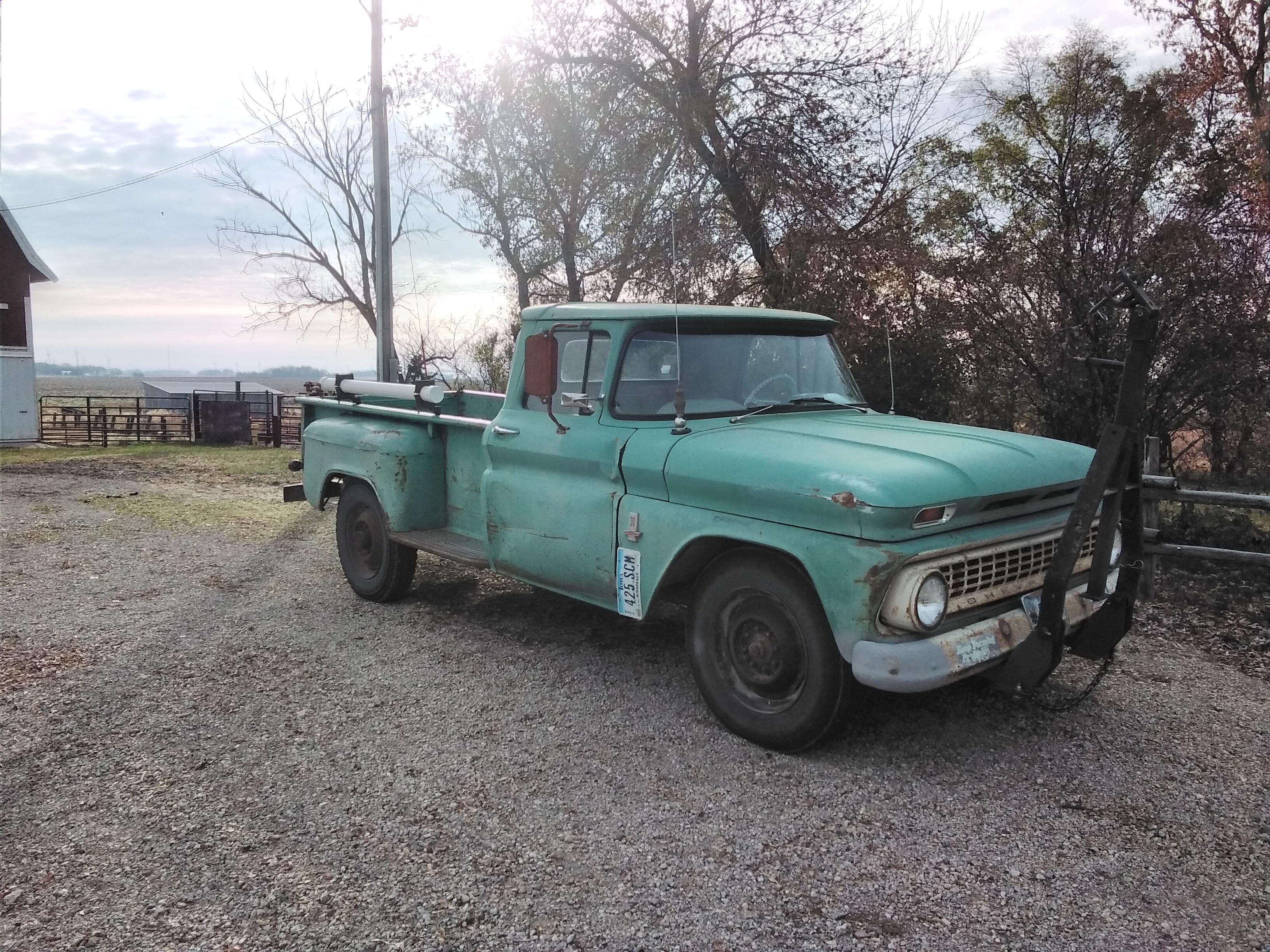 Your editorial inspired me to write about my experiences with my farm trucks. As with anyone or anything you love, it is unfair to single out only one.
My first pickup experience was with my dad's black 1961 Ford F-250. I learned to drive that pickup when I was 5 years old. I learned to shift the four-speed because my dad had cracked ribs; I sat in the middle and rowed the shifter while he ran the gas and clutch.
The next pickup was dad's 1969 Ford F-250 with a V8 and automatic. It would burn rubber REALLY well – not that I ever demonstrated that to him!
Your editorial inspired me to write about my experiences with my farm trucks. As with anyone or anything you love, it is unfair to single out only one.
My first pickup experience was with my dad's black 1961 Ford F-250. I learned to drive that pickup when I was 5 years old. I learned to shift the four-speed because my dad had cracked ribs; I sat in the middle and rowed the shifter while he ran the gas and clutch.
The next pickup was dad's 1969 Ford F-250 with a V8 and automatic. It would burn rubber REALLY well – not that I ever demonstrated that to him!
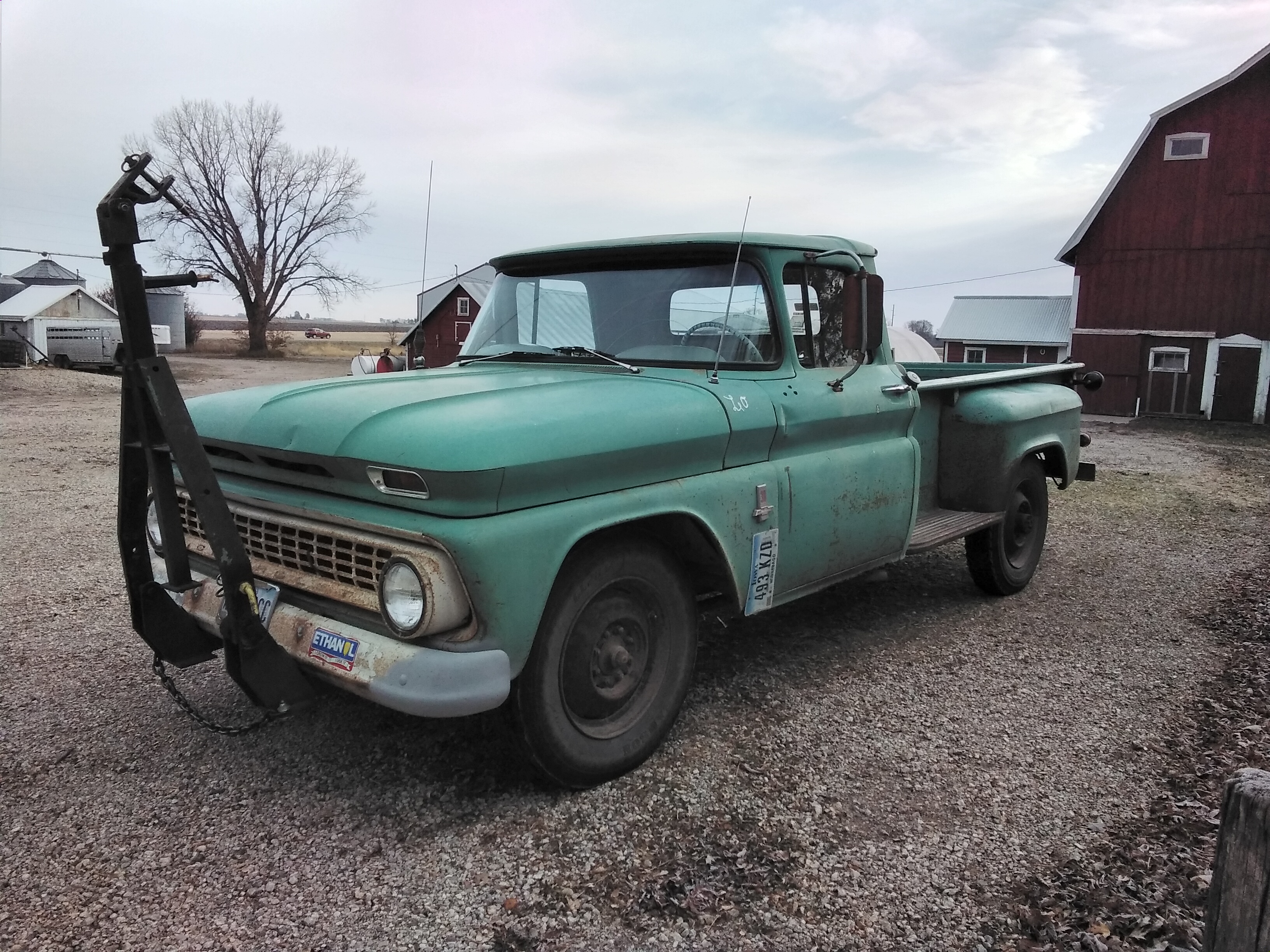 When I started farming, I bought a 1983 Chevy K-10. With a warmed-over small block and good gas – along with a cooperative tail wind – it would easily top 100 mph. Not that I ever demonstrated that, either, except to a very understanding county deputy. It hauled hogs and cattle. It also served as a seed tender and ambulance before being retired due to terminal rust. The engine deserves to live on in a hot rod someday, I hope.
When I started farming, I bought a 1983 Chevy K-10. With a warmed-over small block and good gas – along with a cooperative tail wind – it would easily top 100 mph. Not that I ever demonstrated that, either, except to a very understanding county deputy. It hauled hogs and cattle. It also served as a seed tender and ambulance before being retired due to terminal rust. The engine deserves to live on in a hot rod someday, I hope.
My next pickup is a 2000 Chevy Silverado. With V8 and four-wheel drive, it has plenty of power and is so comfortable. It easily handles stock trailers and NH3 tanks.
Finally, my pride and joy is a 1963 Chevy C-30. With a lightly modified six-cylinder and a four-speed, it will scoot. Because it is a tonner, equipped with a nine-foot box, it has plenty of room in the box for oil and spare tires and other equipment when we tow it to the field to drive home later. Driving it takes me back to my youth.
Harley Hassebroek
Buffalo Center, Iowa
Dear Ann,
My all-time favorite farm truck was my folks’ first truck. It was a 1951 Ford with a flat head V-8 and “three on the tree.” What it lacked in beauty was made up for in guts! The load limit was determined by what it would hold, and weight was not an important consideration.
I put in a cutout, a device that goes in the exhaust pipe before it gets to the muffler, allowing the exhaust to go directly out the pipe when open. What fun it was coming down the long, curving hill into Henderson, my hometown, pulling the handle on the parking brake, which had nothing to do with brakes but opened the cutout. You then turned the key off and then back on, which created a big KABOOM and fire shooting out all sides underneath the truck.
We had to replace the original flathead, so we went to a salvage yard in Red Oak. We bought another motor, loaded it in the trunk of our ’56 Plymouth and drove the 16 miles home. We parked under a tree, pulled it out with a chain hoist, pushed the truck under the tree, put the motor in and drove it several more years.
Lyle Asell
Chariton, Iowa
Dear Ann,
I started farming in the ’70s. Life was good, and I had a small blue Chevy Luv Truck, which was not ideal for agriculture. I was able to destroy it completely in a few years.
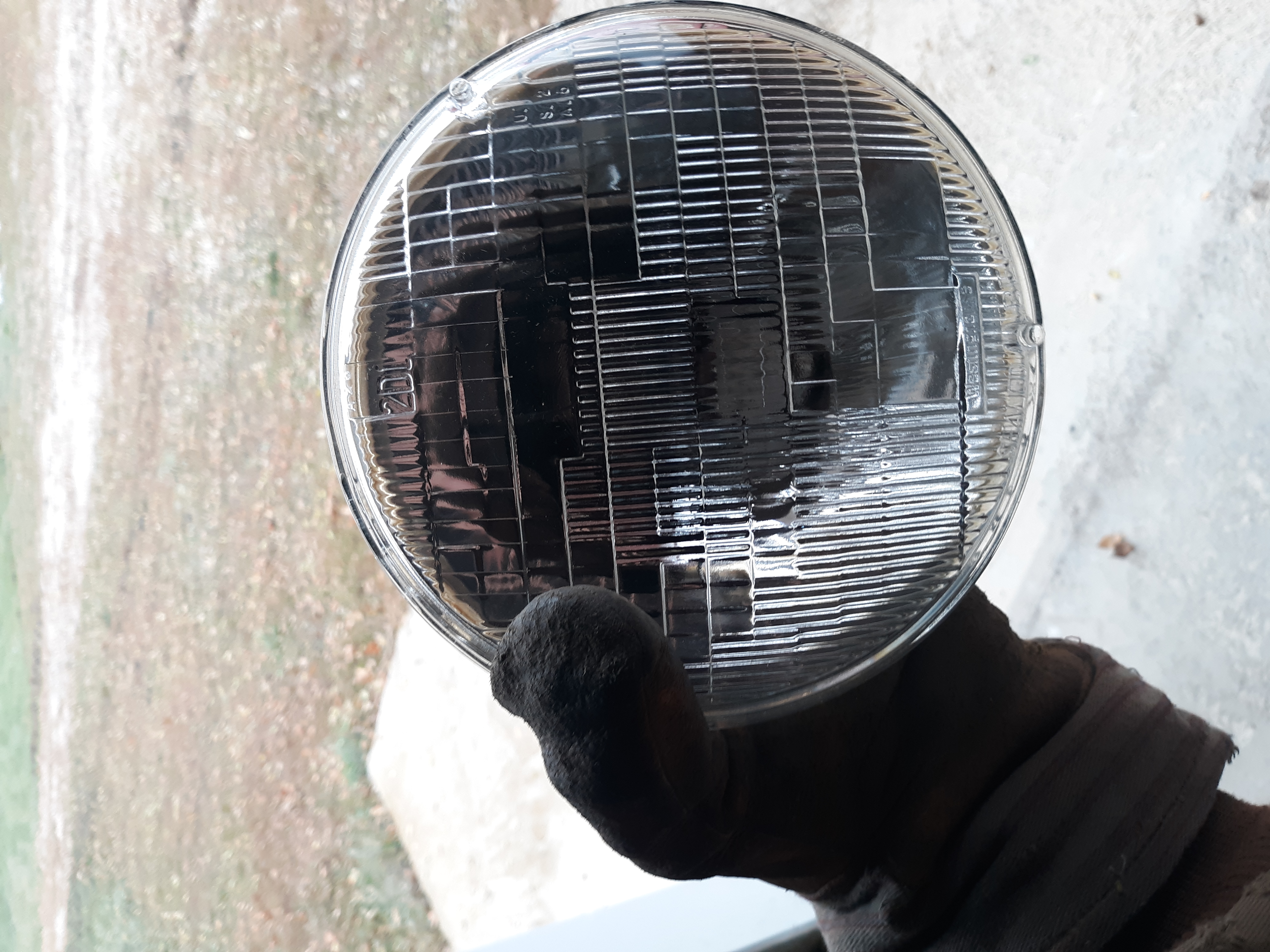 At about the same time, President Carter embargoed grain to Russia and the poor little Luv Truck breathed its last breath. Because of low prices caused by the embargo and two young mouths to feed, money for a new pickup was nonexistent. I was lucky, and dad came to my rescue. He found someone who had a 1968 Ford F-250 for sale. The price was $250. That part was agreeable because I sold the carcass of my little Luv Truck for $300.
At about the same time, President Carter embargoed grain to Russia and the poor little Luv Truck breathed its last breath. Because of low prices caused by the embargo and two young mouths to feed, money for a new pickup was nonexistent. I was lucky, and dad came to my rescue. He found someone who had a 1968 Ford F-250 for sale. The price was $250. That part was agreeable because I sold the carcass of my little Luv Truck for $300.
Cash in hand, I went to look at the F-250. I pulled into the driveway and saw a good-looking, heavy-duty truck. I had never owned a Ford vehicle of any type but thought I could tolerate this one. It needed a little buffing and a coat of wax, and it would be acceptable. I walked around the truck’s right side, which looked like it had been in a war.
The right-side headlight was pushed back to the front tire, the right fender was shoved back to the door and the door wouldn’t open. The right rear quarter panel was missing some paint -- a lot of paint -- and some of the metal the paint was attached to. It had over 95,000 miles on it, but it drove pretty well. It was a piece of junk, but it had four pretty new tires and a steering wheel, plus I needed something.
I reluctantly counted $250 and said to myself, “It is only temporary until prices recover, and we are the money again.” I took it to Dad’s place because I didn’t want to take it home. A quick trip to the salvage yard showed me I didn’t have enough money to buy body parts for the blue 250.
With the aid of a couple of log chains, a tree and a tractor, I was able to pull the front fender back to somewhat of a normal position. A piece of plywood to mount the headlight to and some silver paint made the front end useable, and the right-side door would open again. After all, there was no reason to spend any money on it because “it’s only temporary.”
I headed into planting season with a truck that had more metal in one spring than the entire Luv Truck had in the whole chassis. As some of us remember, the ’80s weren’t kind to agriculture, so the “Blue Beast” stayed around a little longer than anticipated. The engine was a durable 300 cubic inch, six-cylinder coupled to a four-speed manual transmission with a granny gear.
The right fender became less noticeable after a couple of years. It was great to drive to a big town because people would look at the right side and think to themselves, “He doesn’t have anything to lose; let’s give him some space.” I wanted to tell them, “Don’t be scared of me; it’s only temporary.” We watched the odometer turn over twice.
In the late ’80s, we could afford a newer pickup, but the Blue Beast would start and run whenever we needed it. It would still haul those bags of seed to the field, and in the fall, carry the auxiliary fuel tank and tools for the harvest. One sad day in the summer of 1994, as I headed home from the elevator, the Blue Beast started to make a distressing sound under the hood. The next thing I knew, I was walking home. The thought occurred to me it might not take too much to get the Beast running again, but when there is a puddle of oil under it and a piece of connecting rod peeking out of the engine block, it was time for the Beast to retire.
After all, it was only a temporary vehicle.
Randy Souder
Rockwell City, Iowa
Dear Ann,
Our 2004 Chevrolet truck came to us used from a Ford Dealership. The “Mrs.” nicknamed the truck “Rickety Boom” from a childhood book character, "Rackety Boom."
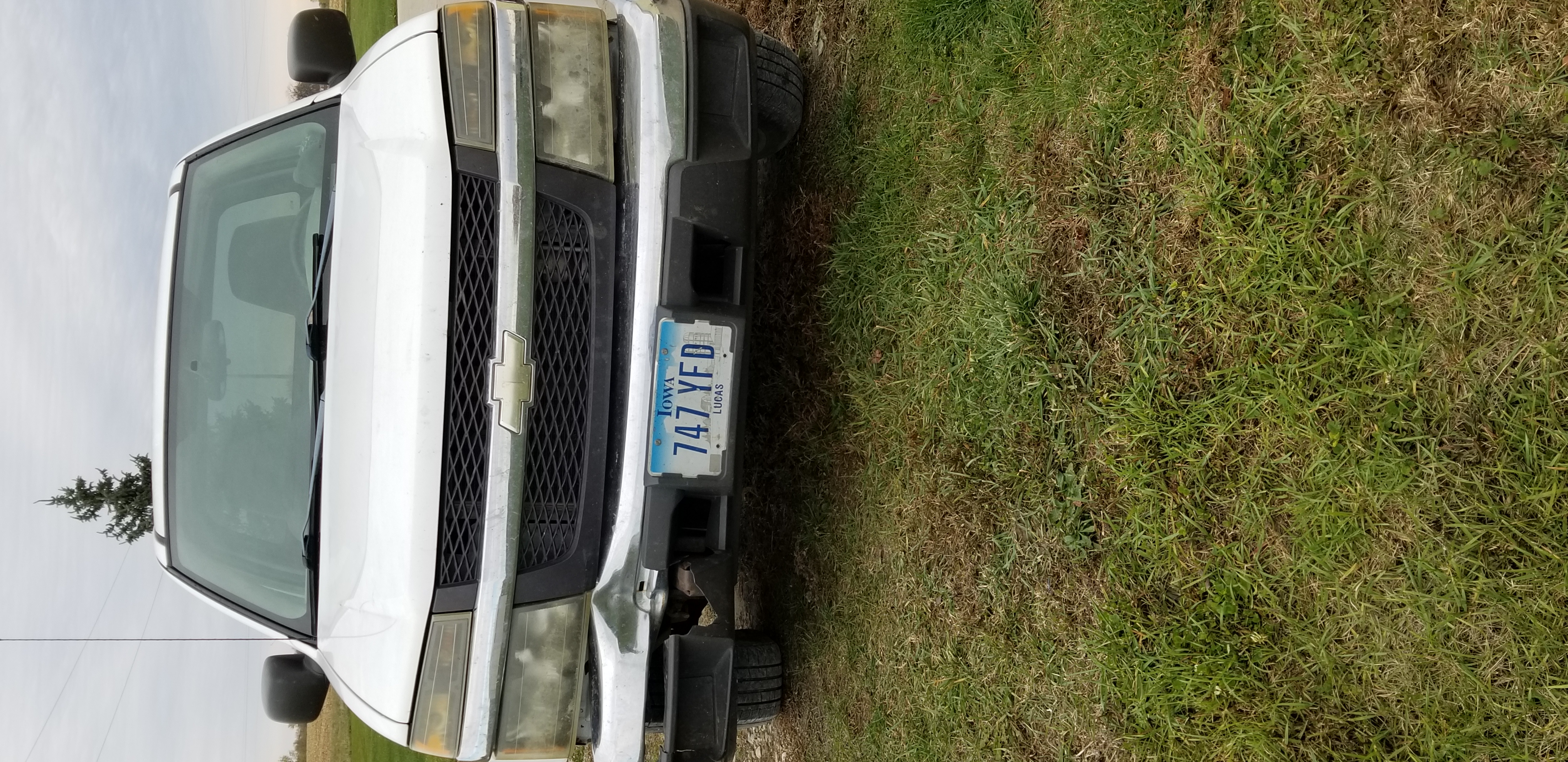
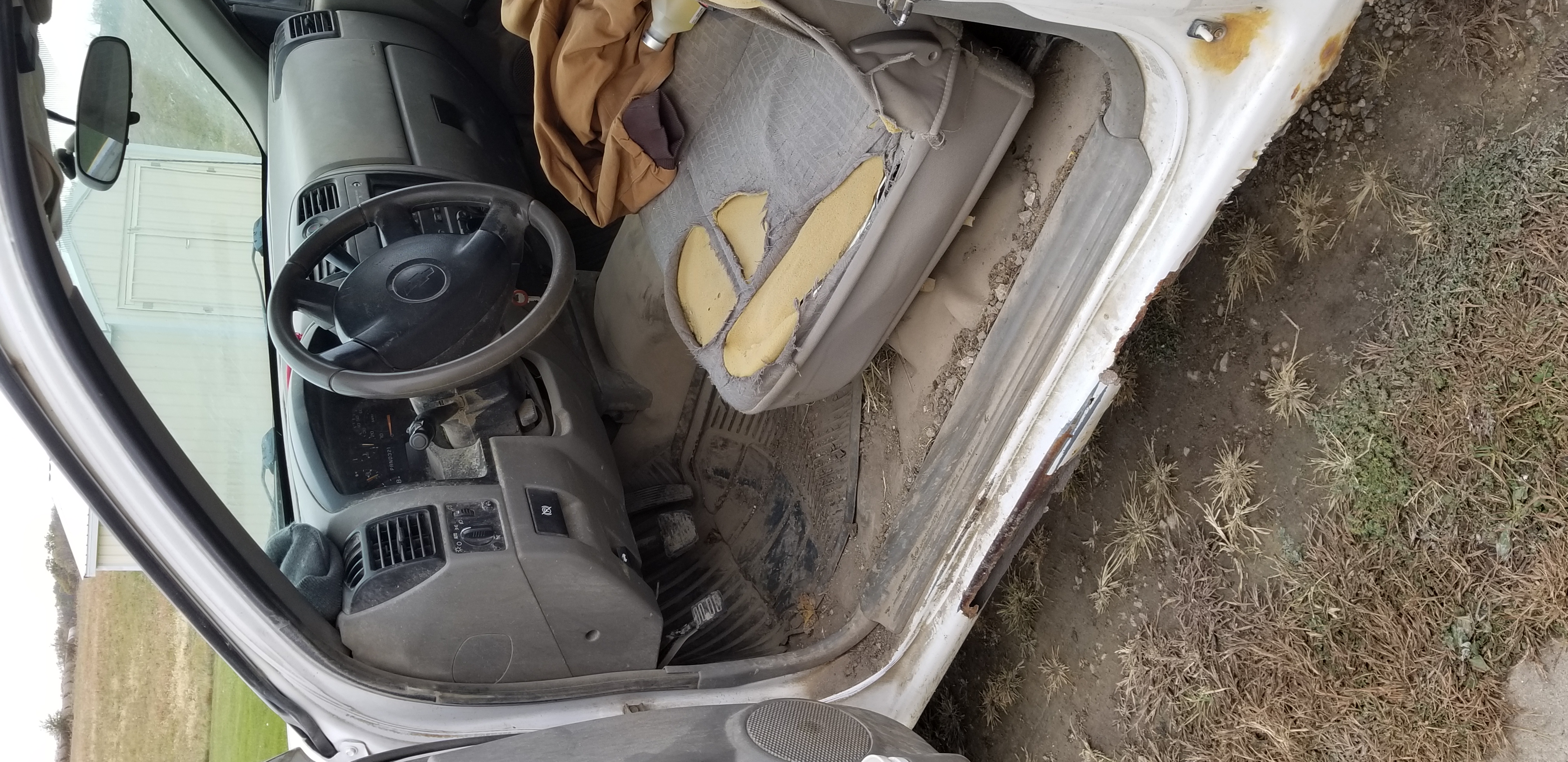
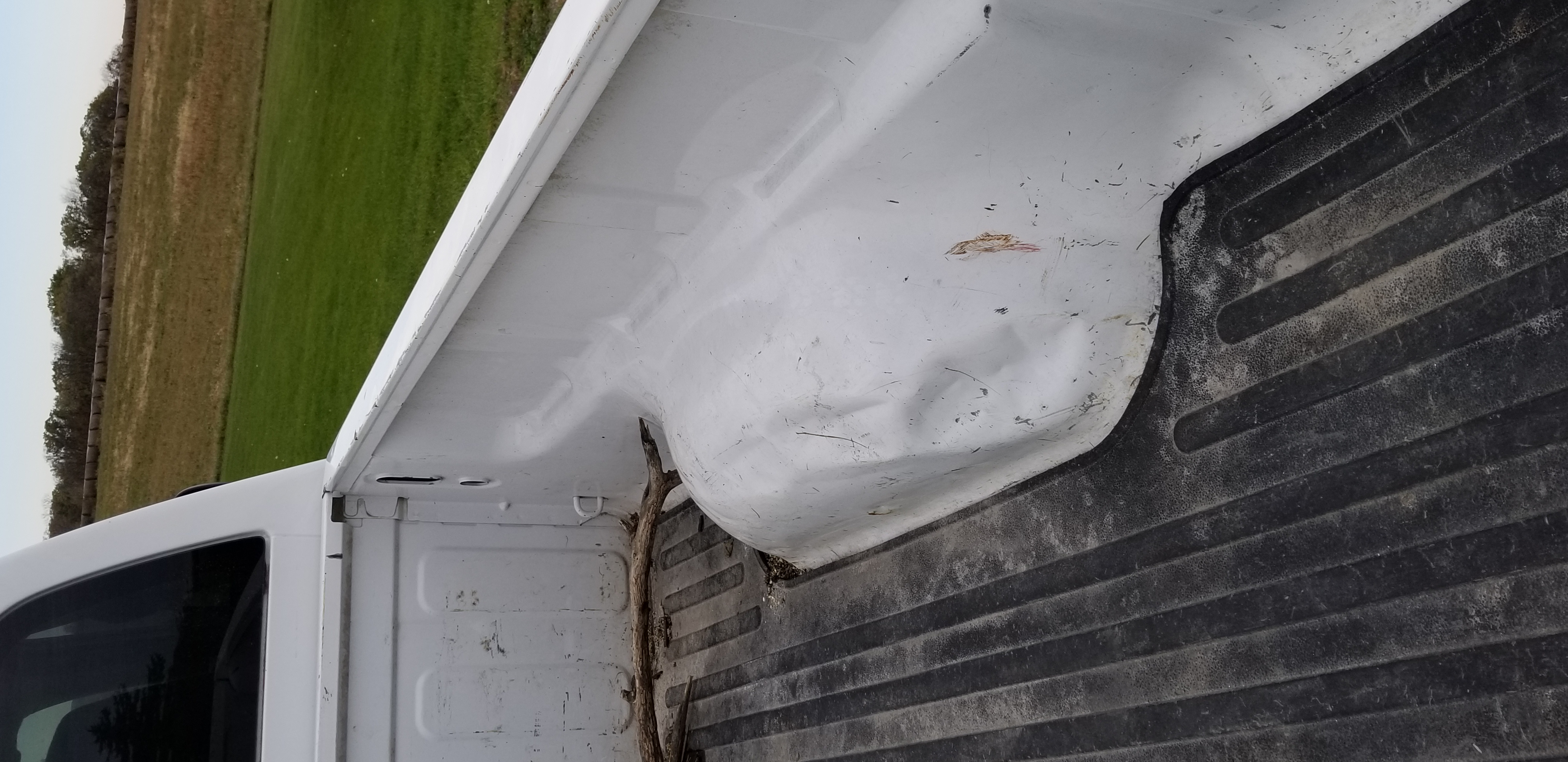
The truck is white, trimmed in rust and the front bumper is dented, courtesy of an icy patch one winter day. The truck’s bed wears a few caved spots from where eager cows impatiently found their feed buckets.
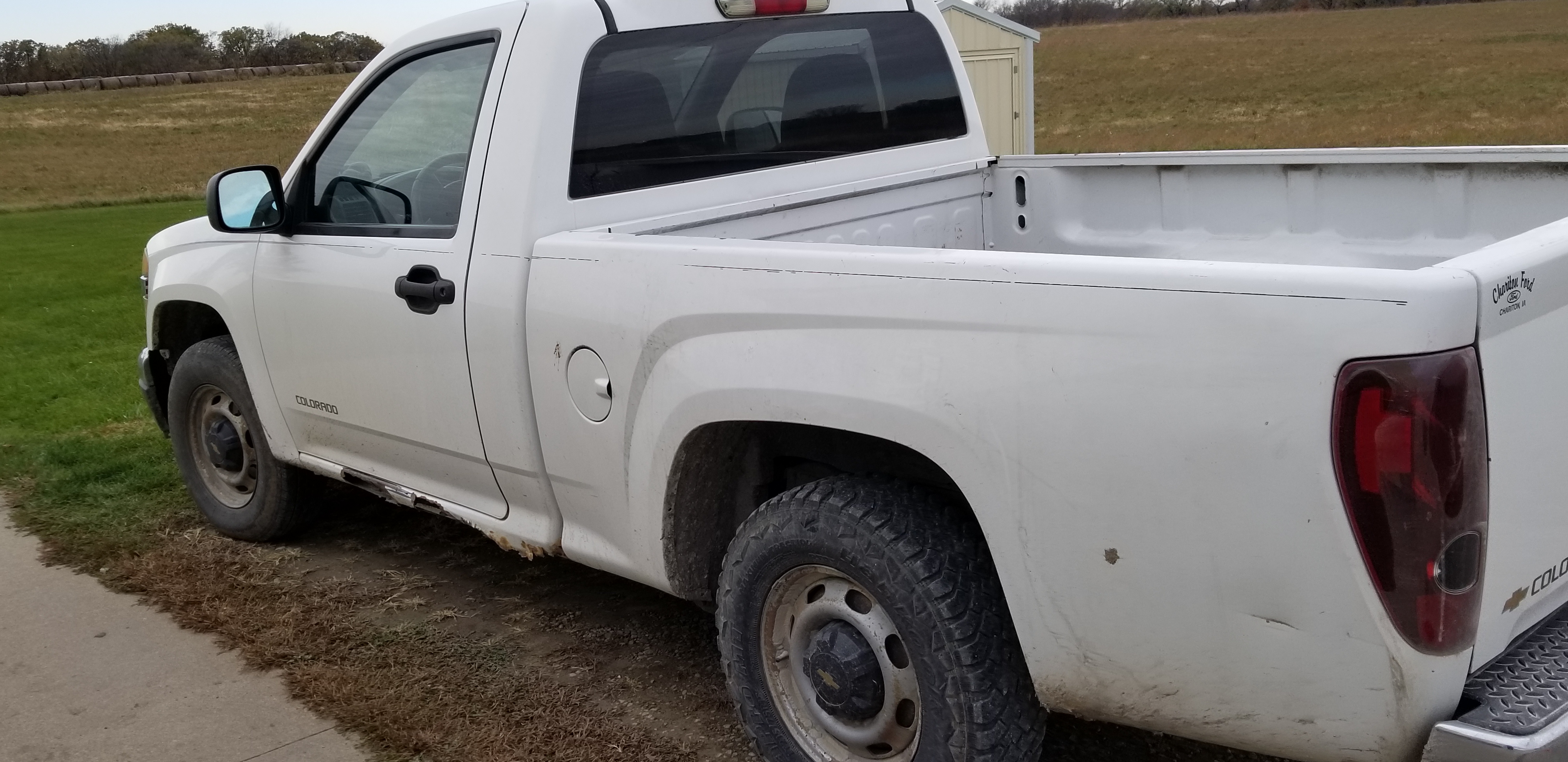 The interior of this farm truck is unique, to say the least. Picture a bench seat – the driver’s side is worn through the cloth covering, worn through the foam padding down to the metal frame. The glove box is filled in papers and receipts, possibly dating back to 2010 or longer. Years have passed since the interior has been dusted or the windows washed. The passenger’s sun visor is held in place heavy-duty rubber bands. However, “There ain’t nothing wrong with the radio!”
The interior of this farm truck is unique, to say the least. Picture a bench seat – the driver’s side is worn through the cloth covering, worn through the foam padding down to the metal frame. The glove box is filled in papers and receipts, possibly dating back to 2010 or longer. Years have passed since the interior has been dusted or the windows washed. The passenger’s sun visor is held in place heavy-duty rubber bands. However, “There ain’t nothing wrong with the radio!”
One of its classic stories was when our hired man was driving Rickety Boom down the road, and the back glass shattered into hundreds of pieces. That was an experience he doesn’t want to repeat.
With age, it has required more and more trips to the mechanic but always returns to the farm ready for whatever comes its way.
Much like the farmer who owns this truck, it works daily, regardless of the weather and has been a stable part of a long-time farming operation.
Theresa Voss
Chariton, Iowa
Dear Ann,
Your article on farm trucks resonated with us. My name is Mary Sue Zaputil. My husband Tom and I retired from 30 years of farming, but farm pickups remain in our memories.
We've had blue trucks, yellow, green, red, and black and white. They were diesels and gas guzzlers; 2 wheel or 4x4; gear shift on the floor; A/C or no A/C; and sometimes holes in the floorboard! Always Chevys. No Dodges or Fords allowed here!
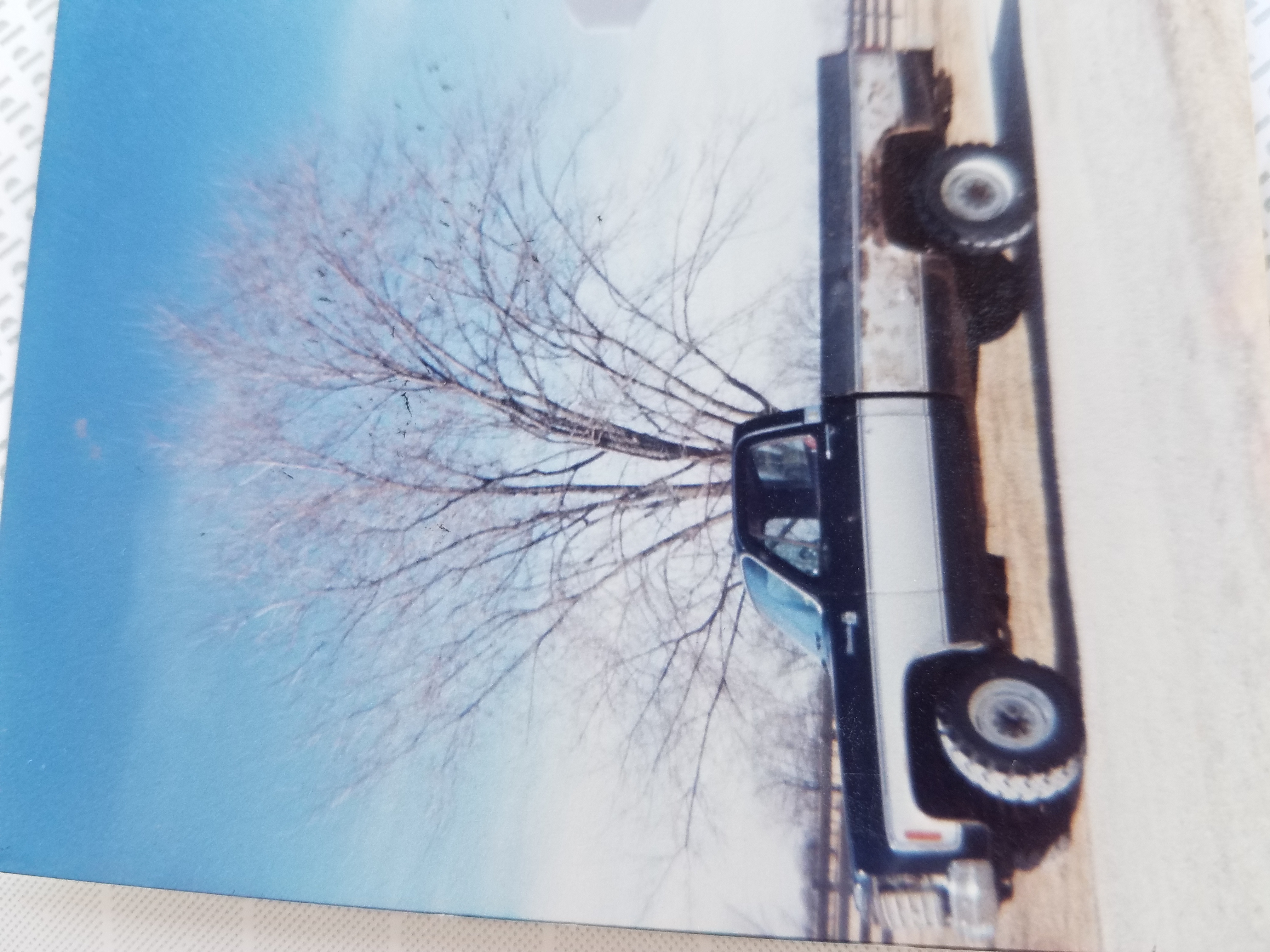 Ole' Black was a powerhouse. While we were spring calving, we often plopped a newborn shivering calf on the floorboard (passenger side) and cranked up the heat to warm the baby. One winter, we didn't have a barn yet (house was built first) and a blizzard blew in. Ole' Black powered through tall drifts to get into the house garage. Once inside, my husband lifted the hood and found snow packed clear around the motor. It took all night to thaw out.
Ole' Black was a powerhouse. While we were spring calving, we often plopped a newborn shivering calf on the floorboard (passenger side) and cranked up the heat to warm the baby. One winter, we didn't have a barn yet (house was built first) and a blizzard blew in. Ole' Black powered through tall drifts to get into the house garage. Once inside, my husband lifted the hood and found snow packed clear around the motor. It took all night to thaw out.
The last farm pickup we had was a red HD 3500 3/4T. diesel that was picky about starting. Its main purpose was to pull the 5th wheel beaver-tail trailer with water/chemical tanks for crop spraying. Look out if you were in front of that unit because that combined weight could blow you off the road!
Ole' Black finally gave up running, but my husband cut the bed off the frame and created a 2-wheeled cart to haul fencing supplies, firewood or scrap metal. Maybe we should have named it the Energizer Bunny!
Mary Sue Zaputil
Mystic, IA
Dear Ann,
Paul and I purchased our beloved new 1976 Chevy ¾-ton FWD K series pickup the year after we were married. This truck was actively engaged in farming through 2018! It's impossible to tally the number of parts trips I made or anhydrous tanks I've pulled with her. For the last several years, she was airconditioned in the winter(yes) and heated in the summer(yes) – due to the fact we could even check out the tires through the large hole in the floor.
Our kids hated being seen in it and being picked up from school with the truck because its appearance left much to be desired. However, it's amazing how their viewpoint changed when they became the cool kids who could throw lawn chairs in the box and, along with their friends, have a great vantage point at outdoor high school sporting events.
Paul and his best farmer friend had massive amounts of adventure as they traversed the snow piled country roads bucking snowbanks and rescuing others in distress on occasion.
She even survived one major mishap in her many years of service. One year, when I was coming to the end of the rows that I was field cultivating, Paul was seemingly waving at me while leaning on the open door of our truck. As he rapidly jumped out of the way, I took the pickup door off its hinges when I realized he was waving at me to stop, OOPS!
"Old Blue," as she is lovingly known, is now resting peacefully in a farm shed as we just can't part with her yet. Who knows, the need could arise for a resurrection!
Yvonne Wente
Waverly, Iowa
Dear Ann,
My truck story is actually a car story. My first car. A ’63 Chevrolet Biscayne. It was worn out when I paid $235 for it in 1970. I drove it 60,000 miles, and I left it for my sisters to drive when I left home to make my millions at 17. A cousin’s son got it about 15 years ago and completely restored it. Old Blue now lives in a garage in Batavia, Iowa. I got a chance to drive it a couple of years ago. What a treat! As I got out of the car, I patted Old Blue on the hood and whispered to her, “Thank you for all the good times … and thank you for never learning to talk!”
Denny Strother
Hampton, Iowa
Dear Ann,
I don’t really have a pickup story. Although my mom’s parents farmed all their work lives, they never owned a pickup that I knew about.
My dad’s parents farmed most of their working lives as well. I started helping them in 1969, the summer I turned 14. That year, my grandfather ran his hand through a “V” belt and lost the end of his middle finger, and I remember grandpa used a ’57 Chevy as a pickup. It had a ‘huge’ trunk that opened all the way down to the low bumper. We could easily get a couple dozen bags of seed or fertilizer in there. And sometimes, we stacked several more in the back seat.
I’m sure it went farther earlier in its life, but I don’t think the car ever left the county after I started helping. It was used several days a week for hauling things around. In addition to seed and fertilizer, we hauled herbicide and insecticide, and fencing tools and supplies. Once or twice a year, we hauled a newborn calf back to the barn in the trunk, with the mother cow following behind. And innumerable baling and bean walking crews were hauled around in it.
Murray McKee
Northern Warren County, Iowa
Dear Ann,
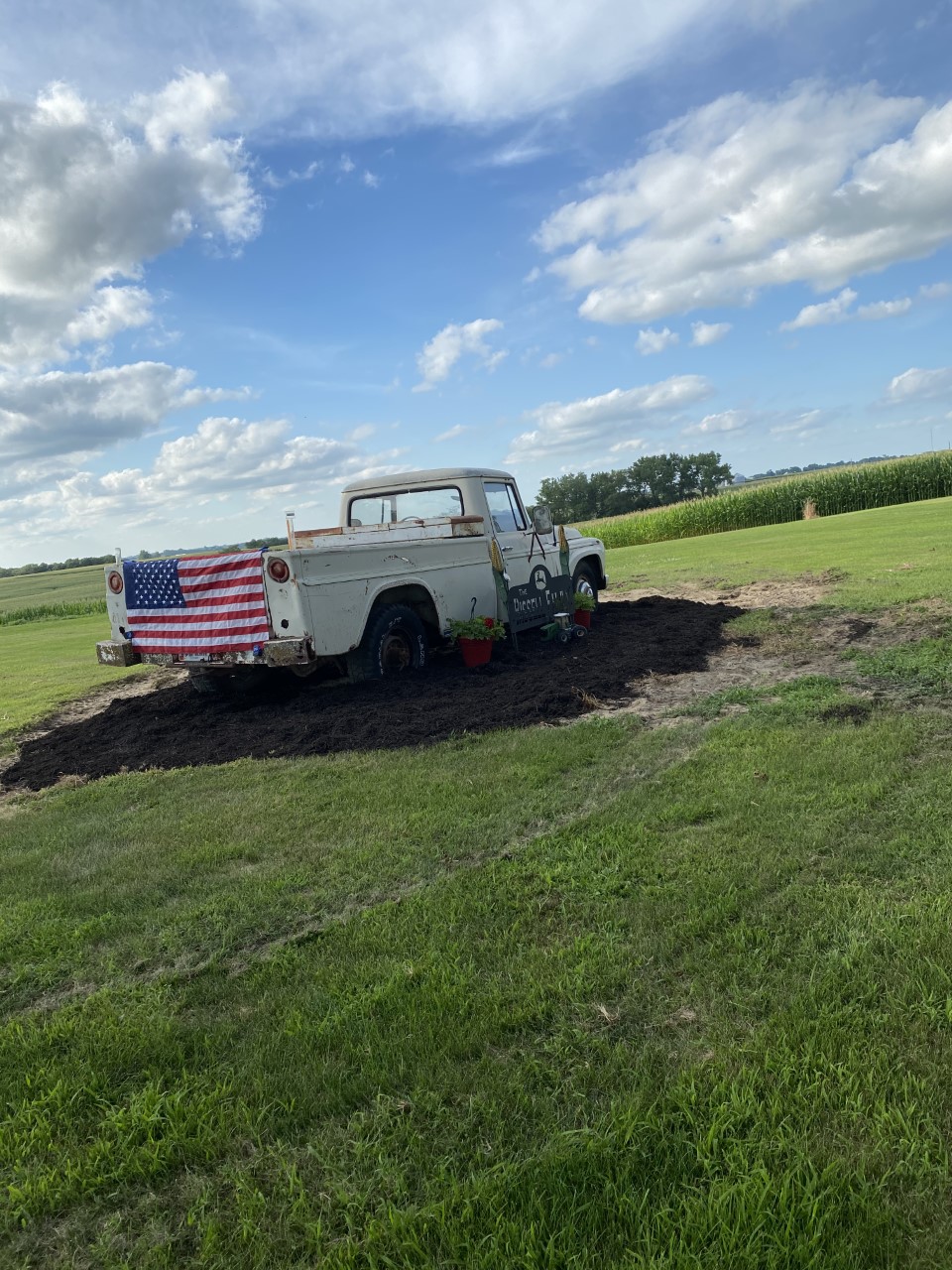
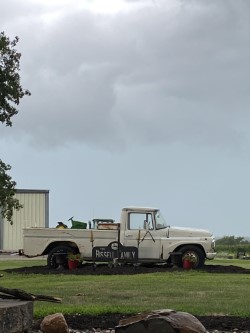 It was 1968 when Dad paid $2,800 and drove his new International pickup off the dealer’s lot.
It was 1968 when Dad paid $2,800 and drove his new International pickup off the dealer’s lot.
From that day forward, it was known as the “International.”
Dad was a feed salesman, so the pickup pulled two different feed grinders throughout the years and hauled ton after ton of sacked feed to farmsteads. It hauled kids to school, moved kids to college and new homes. It was the pickup used for joy rides when I was in high school. Once, a combine backed into the back of the pickup, and the combine wheel ended up inside the box!
While going down the highway one day, after meeting a semi, the hood flew off and looked like a frisbee flying through the air. We picked it up, hammered out a few dents and with a tarp strap, strapped it on and headed back down the highway. When no other vehicle would start, we could always depend on the International. One had to be careful, however, when driving gravel roads. The dust was as bad on the inside as it was on the outside! One of the International’s last trips in 2000. It drove my dad to his final resting place. Our son Klint inherited the truck, and it now adorns his yard, near Bedford, Iowa.
Rick Bissell
Corning, Iowa
Part of this article was originally published in the November 2020 issue of the Iowa Soybean Review.
Back